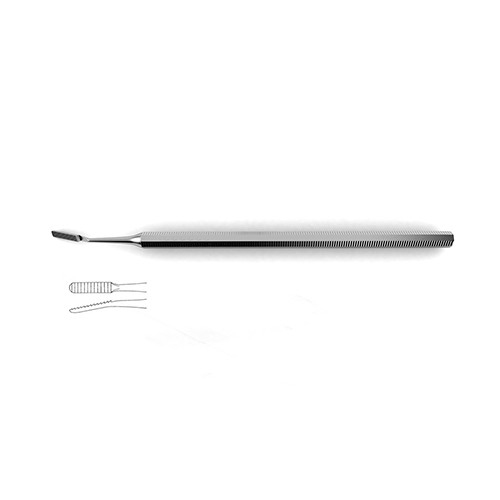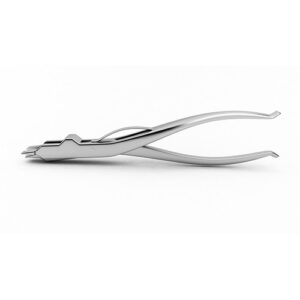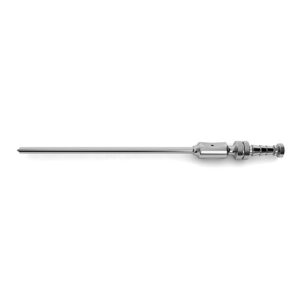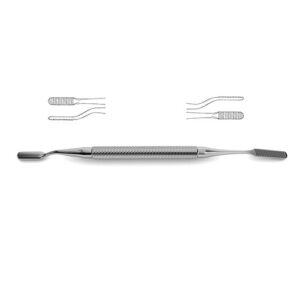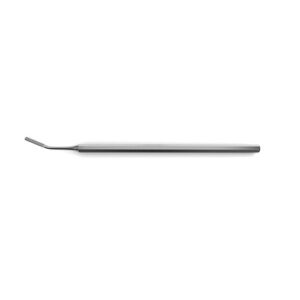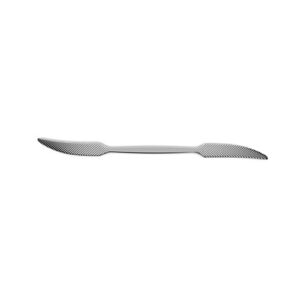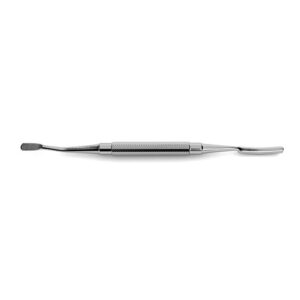| Name | Bone File #92B |
| Lead Time | Lead time advised within 48 hours of order placement. |
| Specialty | Neuro, Ortho & Spine-Rasps & Files |
| Material Finish | Stainless Steel |
| Grade | Premium Operating Room |
| Units of Measurement | Each |
| Manufacturer | seemab surgical |
| Sterility | Non-Sterile |
| Usage | Reusable |
Bone File #92B
single-ended, 2.0 mm wide, file inside, backward cutting, angled w/ serrations, 6″ (15.0 cm)?Bone File is a highly versatile instrument that can be used in almost any neurosurgical orthopedic procedures. Ranging from craniotomies to spinal surgery this file can be used to file down any types of bone. This can be useful in smoothing down rough edges to prevent catching or tearing of delicate tissues or vasculature during surgical intervention. This instrument is single-ended with the file inside and is angled with serrations and can be used in backward cutting.
SKU:
VI-01-1237
Category: Rasps & Files
Description
Shipping & Delivery
Related products
Bone File #12Ca
double-ended, bell pattern, cross serrations, 5.0 mm & 7.0 mm wide ends, 7" (17.5 cm)?Bone File #12CA is designed for use in manipulation of bone. This particular file is designed in a bell pattern and is double-ended making it a versatile instrument that can be useful in a vast array of settings. One end is 5.0 mm while the other is 7.0 mm and both features cross serrations. This file can be useful in doing this such as filing down bone when doing grafting procedures or simply to reduce the jaggedness of bone and other hard protuberances that may cause trauma to surrounding soft tissue layers of vasculature.
Putti Bone Rasp – Round Blades
round blades, double-ended, 1 10.0 mm round blade tapers to 4.0 mm & 1 15.0 mm half-round blade tapers to 5.0 mm, 12" (30.5 cm)?Putti Bone Rasp is an instrument ideally suited for use in surgeries that require handling and particularly mild reshaping of bone such as in neurosurgical or orthopedic surgeries. . This instrument is double ended and features one round blade and another half round. The unique design of this rasp is in the leap shaped silhouette that tapers from 11.0 mm to 4.0 mm for the round blade and from 15.0 mm to 5.0 for the half round that allows it to be fit into slim and narrow spaces and effectively whittle down bone or hard tissue from any angle.
Gallaher Rasp
straight, coarse teeth, 6.5" (16.5 cm)?Gallaher Rasp is ideally suited for use in shaping or whittling down bone and other hard tissue. It can aid in prevention of further trauma or injury to soft tissue layers such as brain in craniotomies or to the spinal cord or neurovascular bundles in laminectomies. A unique feature of this rasp is the additional loop affixed to the base of the handle for placement of the thumb for added grip and maneuvering. Additionally this rasp is straight and features coarse teeth.
Bone File #33
double-ended, plain serrations, 6.0 mm & 5.0 mm wide ends, 7" (17.5 cm)?Bone File #33 is ideally suit for use in neurosurgical and orthopedic surgeries that require manipulation of bone in and around delicate tissue structures. This type of instrument can be useful in filing down the skull in procedures like craniotomies or in reshaping the vertebral arch during laminectomies or hemi-laminectomies. This gives added protection to the brain tissue or neurovascular bundles that can pass over these cut surfaces that may be jagged and could cause additionally injury or trauma. Additionally this file is double ended with plain serrations and features a 6.0 mm and 5.0 mm wide ends.
Bone File #92A
single-ended, 2.0 mm wide, file outside, backward cutting, angled w/ serrations, 6" (15.0 cm)?Bone File is a highly versatile instrument that can be used in almost any neurosurgical orthopedic procedures. Ranging from craniotomies to spinal surgery this file can be used to file down any types of bone. This can be useful in smoothing down rough edges to prevent catching or tearing of delicate tissues or vasculature during surgical intervention. This instrument is single-ended with the file outside and is angled with serrations and can be used in backward cutting.
Putti Bone Rasp – Flat Blades
flat blades, double-ended flat blades, 18.0 mm width tapers to 4.0 mm, 1 end curved up, 1 end curved sideways, 10-1/2" (26.5 cm)Putti Bone Rasp is an instrument ideally suited for use in surgeries that require handling and particularly mild reshaping of bone such as in neurosurgical or orthopedic surgeries. . This instrument is double ended and features two flat blades. The unique design of this rasp is in the leap shaped silhouette that tapers from 18.00 mm to 4.0 mm that allows it to be fit into slim and narrow spaces and effectively whittle down bone or hard tissue from any angle.
Bone File #10
double-ended, plain serrations, 5.0 mm wide ends, 7" (17.5 cm)?Bone File #10 is a general purpose instrument useful in surgical procedures that require manipulation of bone. This file is double ended making it quick and easy to switch to another unused file without having to switch instrumentation. Each end features plain serrations and is 5.0 mm wide. Additionally this instrument features a slightly textured handle surface that reduces slippage making this instrument ideally suited for a variety of precise neurosurgical procedures.
Polokoff Bone File
Polokoff Bone File is a widely used instrument in surgery to aid in mild bone reshaping. Orthopedic neurosurgical procedures such as craniotomies or spinal surgeries such as discectomies require manipulation and handling of very delicate tissue such as nerves or brain tissue itself as well as a vast amount of vasculature. This file can be used to reshape or whittle down bone fragments that are sharp or jagged and could cause injury to any of the above tissue. Additionally this file is available with a short head and fine serrations or a long head with medium serrations.

